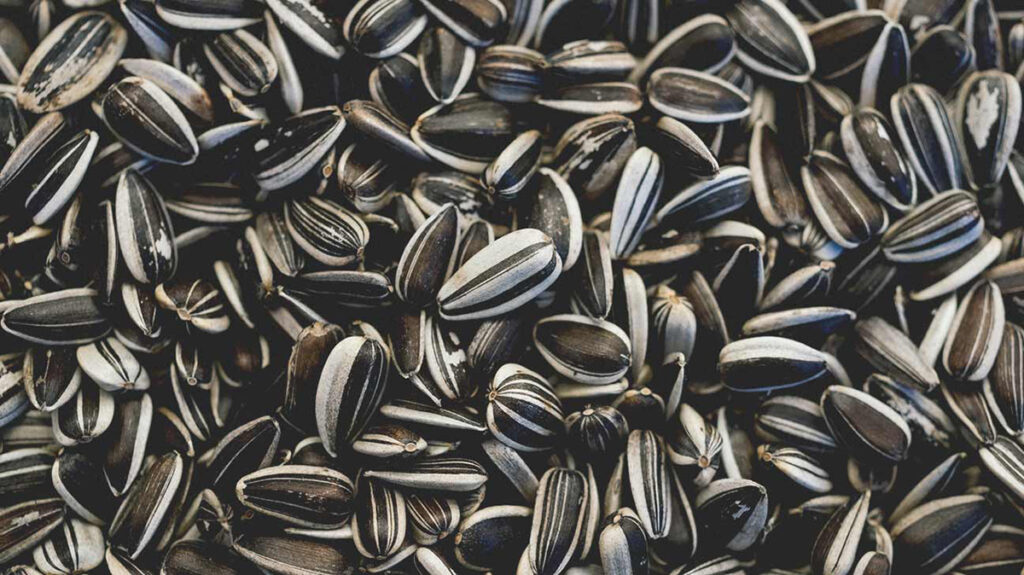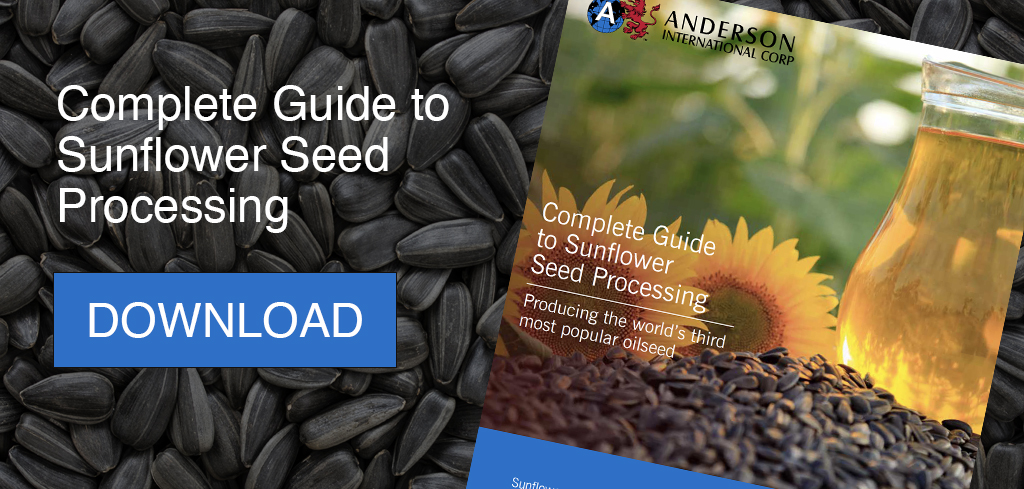
As one of North America’s only native oilseed crops, sunflowers have been a popular commodity for ages. Recognized by its bright yellow blooms, the sunflower’s appeal lies deeper than its ornamental value, thanks to its oil-rich seeds. To reach this valuable plant’s full potential (and profit), processors need to understand the ins and outs of sunflower seed processing.
With global production of 20 million metric tons annually, sunflowers rank third behind soybean and canola in popularity. Widely used as a cooking oil and in-shell snack, sunflower lends its health benefits and other uses to its seed’s unique fatty acid profile.
But with more than half of the world’s supply concentrated in war-torn Russia and Ukraine, sunflower oil faces critical market pressures forcing suppliers to optimize their approach to seed processing. Here’s a quick overview of the challenges sunflower oil processors must overcome to meet current demands.
Global sunflower production
Aptly named for its large yellow blooms and its ability to tilt its head toward the sun, the sunflower (Helianthus annuus) was first domesticated by Native Americans who grew the plant as a high-energy food source. Spanish explorers carried sunflower seeds to Europe, and the crop started gaining popularity in Russia by the 1800s.
Russian agronomists began hybridizing sunflowers to isolate varieties rich in oil, using it as a substitute for butter and lard, which the Russian Orthodox Church prohibited during Lent. This selective breeding increased the oil content in sunflower seeds from less than 30% to nearly 50%.
Immigrants reintroduced these high-oil sunflower varieties back to North America. The crop grows today in nearly every climate from California to the Midwest, from Texas to Minnesota and the Dakotas. Although sunflower oil production is widespread around the globe, most of the world’s production is centered in Russia and Ukraine, which together produce more than half of the global supply.
While most of the world’s sunflower production (between 85-90%) focuses on these oil-rich varieties, non-oil or confection seeds are also cultivated for consumption. These larger, edible seeds are sold in-shell as a snack, used as an ingredient in granolas and baked goods, or sold as birdseed.
Sunflower seed processing
Sunflower seeds cultivated for oil can be challenging to process because of their tough structure and high fat content. Overcoming these challenges requires proper pre-treatment and appropriate pressing equipment.
The thick, heavy hull or shell covering the seed is the first and most significant challenge of sunflower seed processing. This abrasive hull makes up nearly a third of the weight of the seed and contains waxes that keep the seed meat dry and protected but offers little nutritional value.
Removing this hull through dehulling is an optional step in sunflower processing that the oil miller must decide for themselves based on the markets they will operate in. Using the proper equipment to separate out the hulls adds value by:
- Reducing wear-and-tear on the equipment.
- Reducing overall energy consumption.
- Minimizing wax content in the oil, which can cloud its appearance and cause it to solidify.
- Increasing the protein concentration in the meal by removing extra fiber.
Read more: The Economics of Dehulling Oilseeds
After the hull is removed, sunflower seeds are conveyed through a series of machines that compress the material into thin flakes, cook it to rupture the seed structure and harden the protein, then dry it to less than 5% moisture to prepare it for extraction.
Solvent extraction of sunflower oil
Solvent extraction uses a chemical solvent such as hexane to separate the fats from the solids, resulting in oil and meal. Since most solvent extractors are designed to handle soybeans, which only contain 20% fat by weight, these high-oil content sunflower seeds require pre-pressing before extraction. Solvent processors pre-press the de-hulled, flaked, cooked, and dried seeds in an expeller, reducing the oil content from 50% to about 20% so the material can be processed through an extractor designed for soybean.
But the pre-press cake is densely packed, making it more difficult for solvents like hexane to flow through freely, which can decrease oil recovery and cause increased solvent hold-up. To improve the extraction efficiency, processors can use an expander like the Anderson Solvex™ to transform dense cake into a porous material called collets. Hexane can flow more easily through these collets, leading to improved recovery of oil and reduced solvent exposure.
Read more: Optimizing Pre-press Cake Extraction with Expanders
Mechanical extraction of sunflower oil
Mechanical extraction is the process by which oilseeds are pressed using high-torque equipment to produce the oil and meal. After dehulling, flaking, cooking, and drying, the dried sunflower flakes can be fed into a screw press like the Anderson Super Duo™ Series Expeller®, which utilizes two pressing sections simultaneously to achieve the lowest possible residual oil.
Another method for optimizing oil recovery during sunflower processing is to use a high-shear dry extrusion system utilizing the Anderson Dox™ Extruder. An extruder replaces stacked cooking and drying vessels and flaking mills using mechanical energy to shear, cook, and dry the seeds in one multifunctional machine.
The Dox Extruder cooks sunflower seeds rapidly in just 30 seconds, compared to 30 minutes in a traditional steam jacketed cooking vessel. Since sunflower oil is composed of polyunsaturated and monounsaturated fatty acids, which can degrade with prolonged heat exposure, this high temperature, high pressure, short residence time, and flash drying process helps preserve the quality of the fats and proteins in the seed. Extruded seed material can be pressed more efficiently for improved oil recovery.
However, the high oil content of seeds like sunflower can pose challenges for extrusion-based systems. The high-pressure environment of the extruder will naturally force out a lot of the bound oil. High oil content seeds such as sunflower contain more than twice the volume of oil by weight as soybean. When extruding material with such a high fat content, the amount of free oil generated can be enough to clog the extruder or downstream conveyors unless you provide it a place to escape. Anderson’s Dox Extruder is currently the only extruder on the market with an optional drainage cage that channels the excess oil, allowing sunflower seeds to be extruded efficiently without any risk of plugging.
After sunflower oil is extruded and pressed, it must be further refined. Specifically, sunflower oil must be winterized to remove waxes left by the hulls. These waxes can cloud the oil, making it less desirable to consumers. To winterize the oil, it is rapidly chilled to solidify the waxes, which can then be filtered out.
Diverse sunflower oil applications
Sunflower oil is a premium vegetable oil because of its many health benefits and versatile cooking performance. It is an excellent source of essential fatty acids due to its composition of monounsaturated and polyunsaturated fats and low levels of saturated fat. Research suggests that diets rich in monounsaturated fatty acids can reduce “bad” LDL cholesterol levels and increase “good” HDL cholesterol, reducing the risk of heart disease compared to oils high in saturated fats. Additionally, sunflower oil supplies more vitamin E than any other vegetable oil.
This unique fatty acid profile makes sunflower oil valuable as an edible oil and in applications ranging from cosmetics to detergents to agrichemicals and animal feed.
Harnessing the full potential of sunflower oilseeds
Amidst the growing global demand for high-quality, heart-healthy oils, sunflower offers plenty of profit potential. With opportunities to serve a wide variety of applications around the globe while supplying an essential dietary staple, sunflower’s premium value exceeds its beauty.
As the Ukrainian war continues to strain the global sunflower supply, the pressure is on processors to maximize sunflower oil yields to keep up with the growing demand for this valuable plant.
Anderson International understands the challenges and the opportunities surrounding sunflower seed processing, with decades of experience guiding oilseed processors through fluctuations in the global market. Anderson can provide the expertise and equipment processors need to tap into sunflower’s full potential.
To learn more about the opportunities this oilseed offers, download Anderson’s guide to sunflower seed processing.

